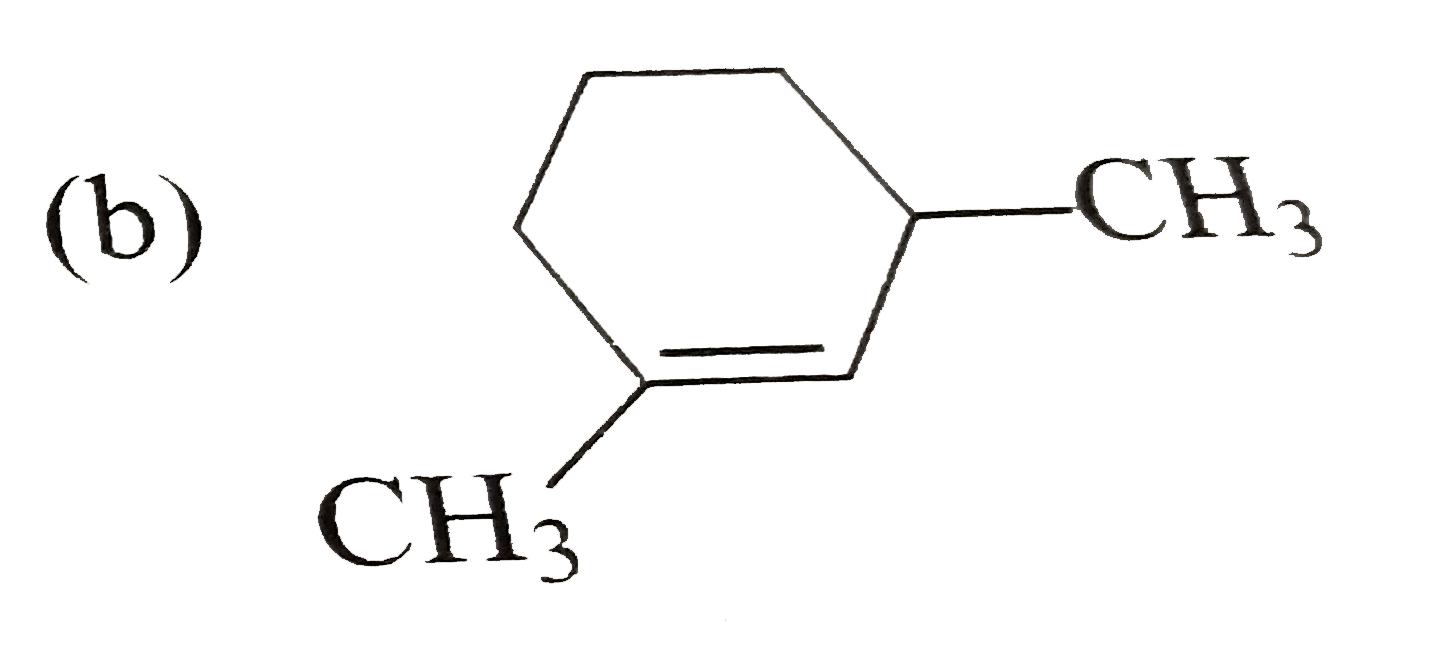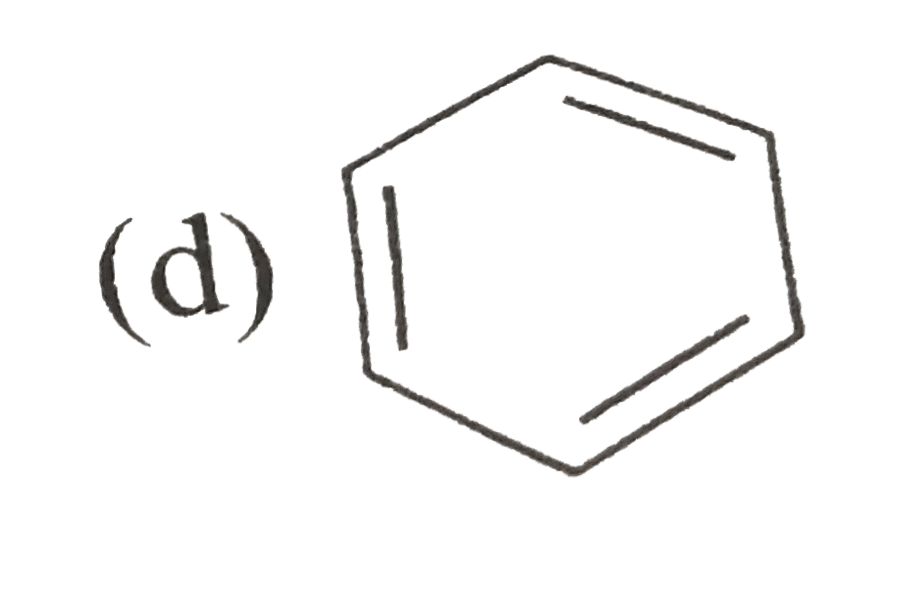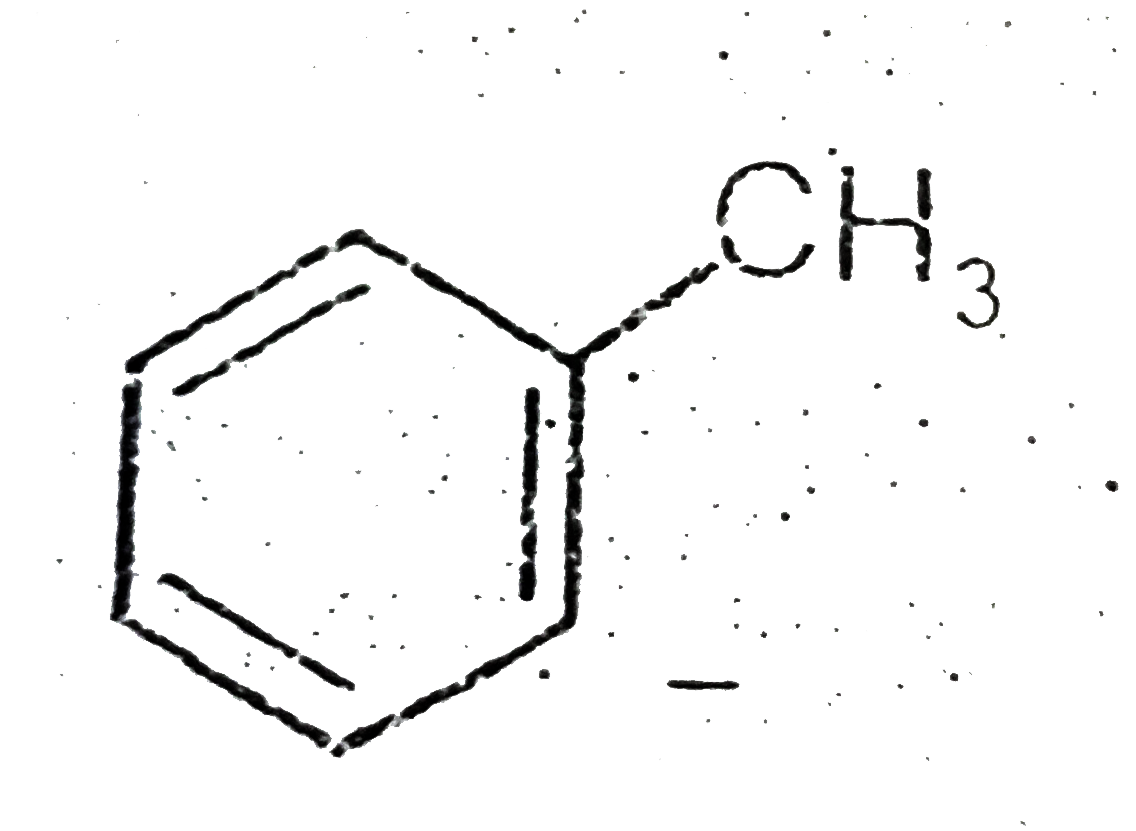In which of the following molecules all the effects namely inductive, mesomeric and hyperconjugation operate?




The correct Answer is:C
To determine in which of the given molecules all three effects—inductive, mesomeric, and hyperconjugation—operate, we will analyze each effect step by step.
Step 1: Understand the Effects
1. Inductive Effect: This is the permanent effect due to the electronegativity difference between atoms, leading to a shift of electron density through sigma bonds. Electron-withdrawing groups (EWGs) pull electron density away, while electron-donating groups (EDGs) push electron density towards the rest of the molecule.
2. Mesomeric Effect: Also known as resonance effect, it occurs when there is delocalization of electrons through pi bonds or lone pairs. This effect is significant in systems with conjugated double bonds or lone pairs adjacent to a double bond.
3. Hyperconjugation: This effect occurs when there is interaction between the electrons in a sigma bond (usually C-H or C-C) and an adjacent empty or partially filled p-orbital or pi bond. It is often observed in alkenes and carbocations.
Step 2: Analyze the Molecules
Now, we need to analyze the given molecules to see where all three effects are present.
1. Molecule A: Check for inductive effect (presence of EWG or EDG), mesomeric effect (presence of double bonds or lone pairs), and hyperconjugation (presence of alpha hydrogen adjacent to a double bond).
2. Molecule B: Repeat the analysis as above.
3. Molecule C: Again, check for all three effects.
4. Molecule D: Perform the same checks.
Step 3: Identify the Correct Option
After analyzing the effects in each molecule:
- If a molecule shows all three effects (inductive, mesomeric, and hyperconjugation), it is the correct answer.
- If a molecule lacks any one of these effects, it cannot be the answer.
Conclusion
Based on the analysis, the correct option is the one where all three effects are present. According to the video transcript, the correct option is C.
1. Inductive Effect: This is the permanent effect due to the electronegativity difference between atoms, leading to a shift of electron density through sigma bonds. Electron-withdrawing groups (EWGs) pull electron density away, while electron-donating groups (EDGs) push electron density towards the rest of the molecule.
Now, we need to analyze the given molecules to see where all three effects are present.
2. Molecule B: Repeat the analysis as above.
After analyzing the effects in each molecule:
- If a molecule shows all three effects (inductive, mesomeric, and hyperconjugation), it is the correct answer.
- If a molecule lacks any one of these effects, it cannot be the answer.
Based on the analysis, the correct option is the one where all three effects are present. According to the video transcript, the correct option is C.
Topper's Solved these Questions
- GENERAL ORGANIC CHEMISTRYBOOK - HIMANSHU PANDEYCHAPTER - GENERAL ORGANIC CHEMISTRYEXERCISE - Level 2 (Q.26 To Q.50)
25 Videos
- GENERAL ORGANIC CHEMISTRYBOOK - HIMANSHU PANDEYCHAPTER - GENERAL ORGANIC CHEMISTRYEXERCISE - Level 2 (Q.51 To Q.75)
25 Videos
- GENERAL ORGANIC CHEMISTRYBOOK - HIMANSHU PANDEYCHAPTER - GENERAL ORGANIC CHEMISTRYEXERCISE - Level 1 (Q.26 To Q.49)
24 Videos
- CHEMISTRY IN DAILY LIFEBOOK - HIMANSHU PANDEYCHAPTER - CHEMISTRY IN DAILY LIFEEXERCISE - Integer Answer Type Problems
7 Videos
- HALIDESBOOK - HIMANSHU PANDEYCHAPTER - HALIDESEXERCISE - Subjective Type Problems
10 Videos
Similar Questions
Knowledge Check
Which one of the following has inductive, mesomeric and hyperconjugation effect?
ACH3CIBCH3−CH−CH2CCH3CH=CHCOCH2CIDCH2=CH−CH2In which of the following all electronic effects namely inductive, mesomeric and hyperconjugative effects are present?
A B
B C
C D
D
In which of the following molecules all the bonds are not equal:-
ACIF3BBF3CAlF3DNF3
In which of the following molecules are all the bonds not equal ?
View SolutionIn which of the following molecules are all the bonds not equal ?
View SolutionIn which of the following moleucles, all atoms are coplanar?
View SolutionIn which of the following moleucles, all atoms are coplanar?
View SolutionIn which of the following molecules, all atoms are coplanar?
View Solution
